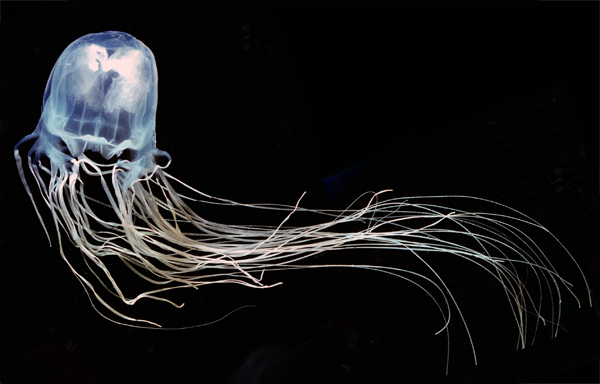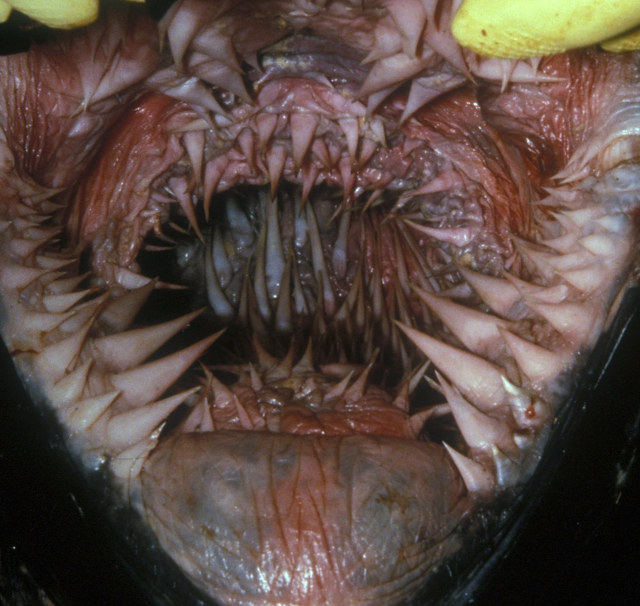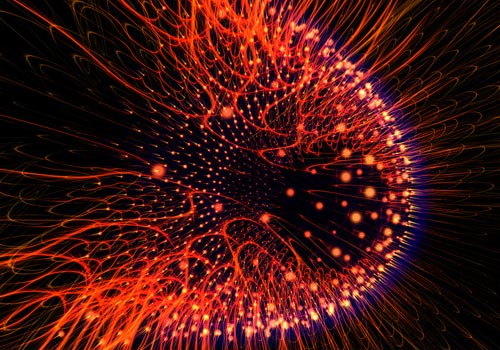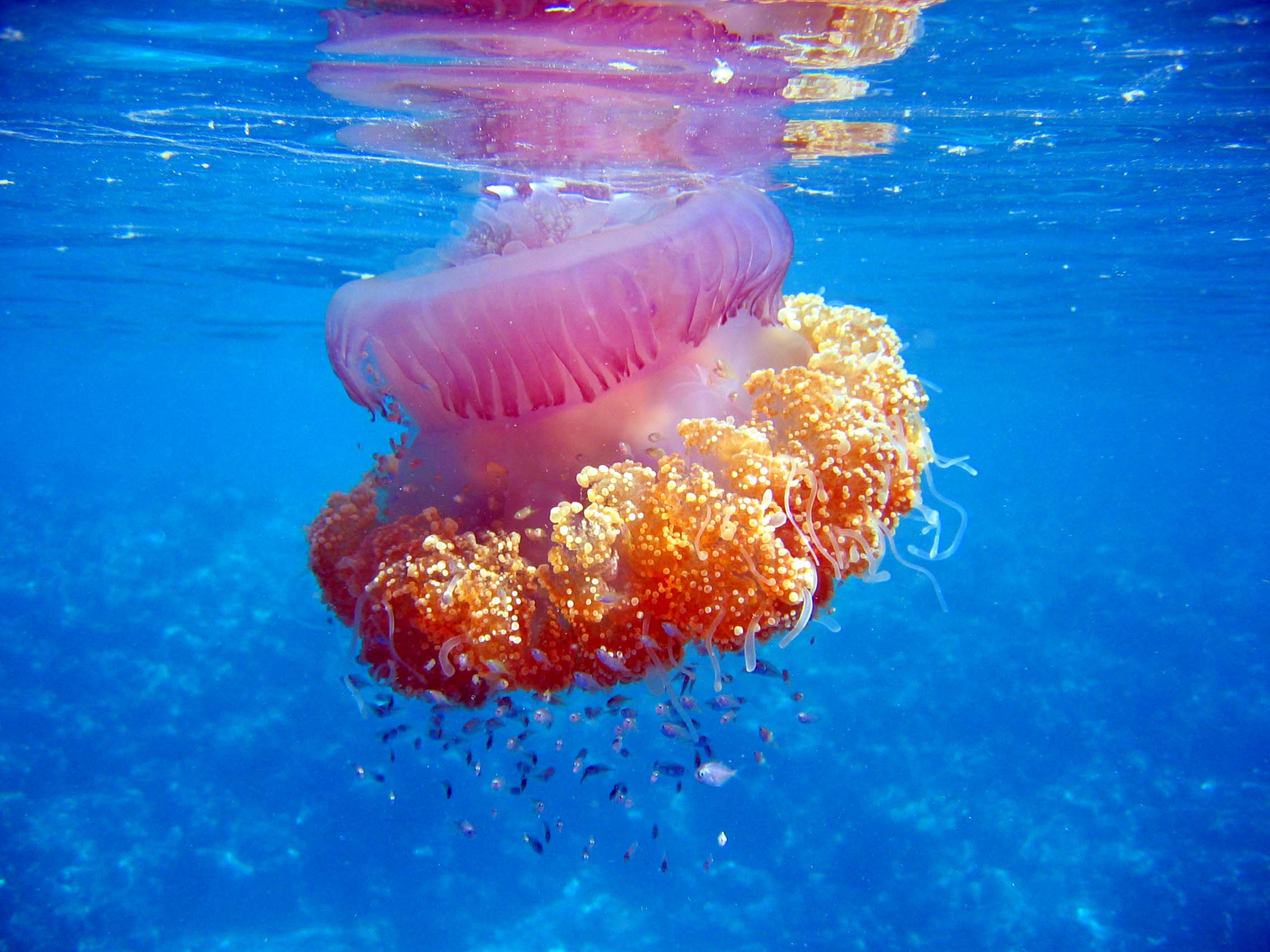Why on earth is a whale shark research organisation writing about jellyfish?! Well it’s World Jellyfish Day and it’s a little known fact that some of the team have rather a soft spot for jellies! Why? Well check out these 10 fun facts and hopefully you’ll come around too…!
- They’re delicious! The crown jellyfish, (above) which is frequently seen in the Maldives is actually one of the edible species targeted for human consumption. This protein rich, fat free and low calorie delight is used in soups or thinly sliced in salads, and for adding that salty flavour of the sea to other fine dishes mainly in China and Japan. Recently, prominent western chefs have also started exploring how to bring this common and sustainable form of seafood to the table as well. Yum yum!
- They’ve been around an awfully long time. One fossil found in Utah was around 650 – 700 million years old. Which makes them one of the earliest – if not the earliest – complex multicellular organisms on the planet.
- Growing up for most species of jellyfish is quite a complicated process. In summary it goes a little like this (big breath….); Fertilised egg -> planktonic larval stage -> settles on hard ground and becomes a polyp -> asexual reproduction to produce a stack of identical tiny jellyfish -> separate from stack as individuals -> grow to maturity -> sexual reproduction -> and we’re back to fertilised egg.
- It may be that some species of jellyfish are immortal. Yeah, really! The somewhat obviously named ‘immortal jellyfish’, Turritopsis dohrnii follows what at first appears to be a normal life history of growing up as explained above. Except that when it becomes old, it reverts back to a more juvenile polyp form. And then goes through the whole process of growing up again. Theoretically, this process can be repeated indefinitely! It doesn’t stop them getting eaten or hit by a boat though…

- Some kinds of jellyfish are amongst the most venomous organisms on the planet. Not really a ‘fun’ fact, more an ‘oh my, that’s horrendous’ fact! The box jellyfish in the picture above (Photographed by Dr. Robert Harwick) has the kind of stinging power which causes victims to go into shock from the pain, sometimes resulting in heart attacks or the like. This incredible stinging power is bought to bear on small fish and other hapless creatures because it needs to immobilise them very quickly – before they can damage its delicate tentacles in their attempts to get away. We humans share an evolutionary pathway back to some of these targeted victims, so share in their discomfort when the jelly stings!
- One species may have a genuine tilt at the title for ‘the worlds longest animal’! Burmese python? P’ah! Blue whale? Getting close. In 1870 a lion’s mane jellyfish, Cyanea capillata, washed up in Massachusetts Bay with tentacles extending 120 feet (37m) out from its enormous 7 foot plus (2.3m) bell! That’s an awful lot of salad ingredient…

- Being a specialist jellyfish eater means you have to evolve a serious set of gnashers! Ok, maybe stretching it on the jellyfish fun facts side here, but just had to find a way to get the nightmarish view of the mouth and throat of a leatherback turtle, Dermochelys coriacea, into this post! What with it being Hallowe’en last week and everything! The leatherback turtle only eats jellyfish. It has had to evolve these dramatic sharp and rear facing spines to grip and ingest the slippery body of a jellyfish. Bet it hasn’t got the best breath in the world either!
- Jellyfish don’t have any brain! Much like the author, they have a nervous system which allows them to react to stimulus from the environment, but not anything of a central brain that seems to coordinate everything. They are also lacking in ears, or a heart, or muscles, or bones… in fact they’re roughly 95% water. That they are still able to be active and efficient hunters able to follow light and in some cases visual clues is remarkable!
 Some species look like fireworks! Again, stretching for a bonfire night angle here, but there are plenty of bioluminescent jellyfish species, like the one in the above image from listoplenty. From the extravagant glow of deep sea species to the rhythmic pulses of light along the humble sea gooseberry, jellyfish bioluminescence is as enthralling to look at as any expensive firework display. Why they do it is subject to debate, with the main two beliefs being it is a way to attract prey or a way to advise potential predators of the painful nature of the organism and that it is best to stay away!
Some species look like fireworks! Again, stretching for a bonfire night angle here, but there are plenty of bioluminescent jellyfish species, like the one in the above image from listoplenty. From the extravagant glow of deep sea species to the rhythmic pulses of light along the humble sea gooseberry, jellyfish bioluminescence is as enthralling to look at as any expensive firework display. Why they do it is subject to debate, with the main two beliefs being it is a way to attract prey or a way to advise potential predators of the painful nature of the organism and that it is best to stay away!- They form at least a tiny part of a whale sharks diet! Bringing this back to whale sharks. Whilst the sharks would likely not target jellyfish directly, the fact is that many plankton blooms are a wide mix of different species and with a 1.5 metre mouth, a whale shark can be as picky as it likes but isn’t going to be able to avoid ingesting the odd jelly! Where it does get serious for the shark however is when jellyfish threaten their preferred food source. With warming oceans and heavy fishing leaving voids in the food chain, jellyfish are becoming the benefactors. More and larger blooms of jellyfish and the associated pressure on small and planktonic prey could mean whale sharks and other fish species have to fight harder for their share of the bounty. So, in summary, eat a jellyfish and (..in probably no way..) save a whale shark!


